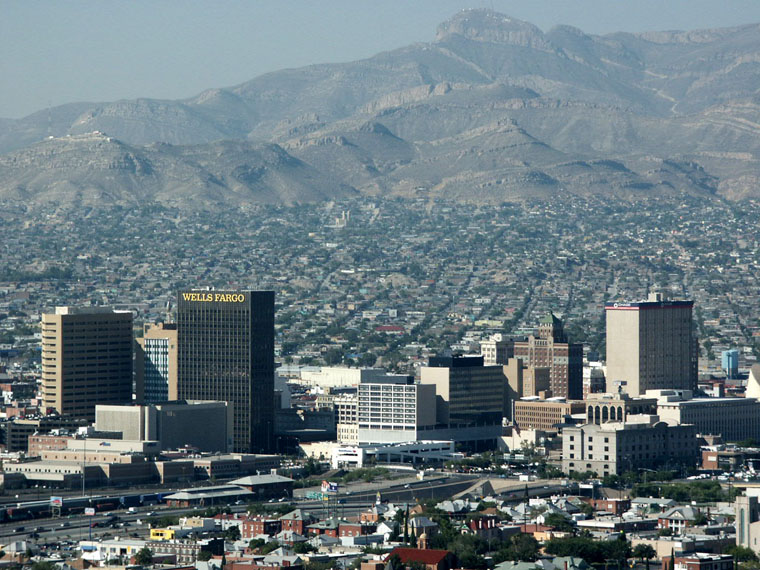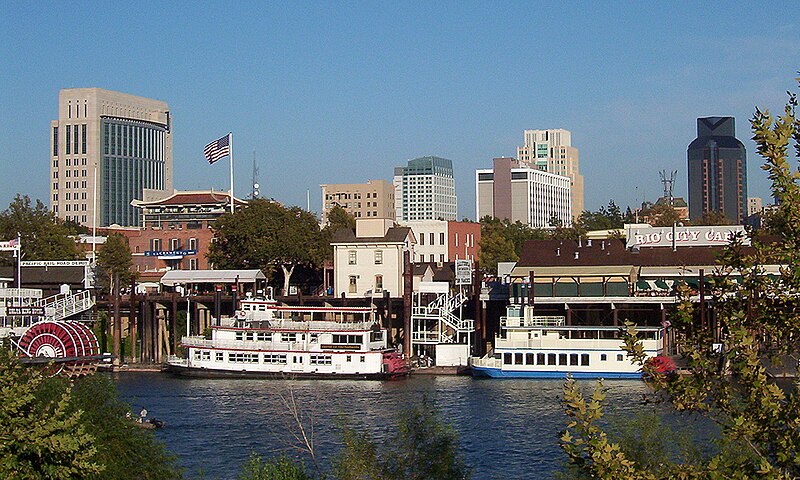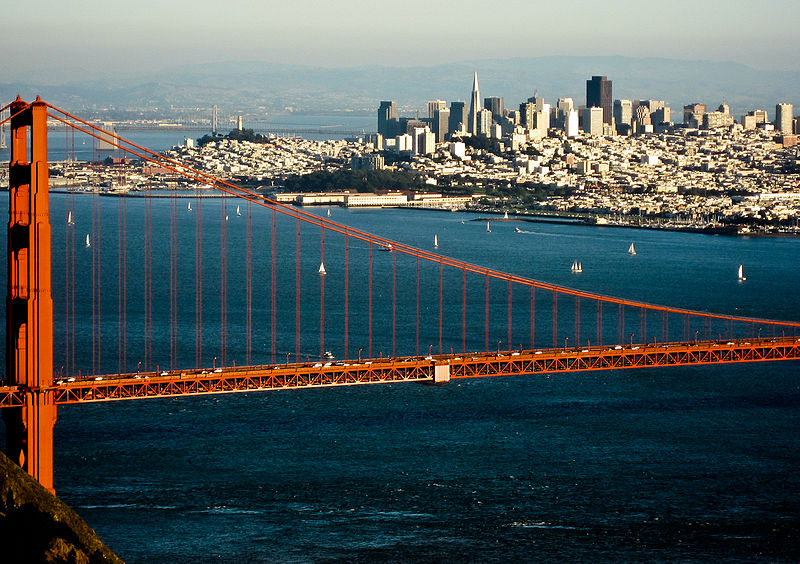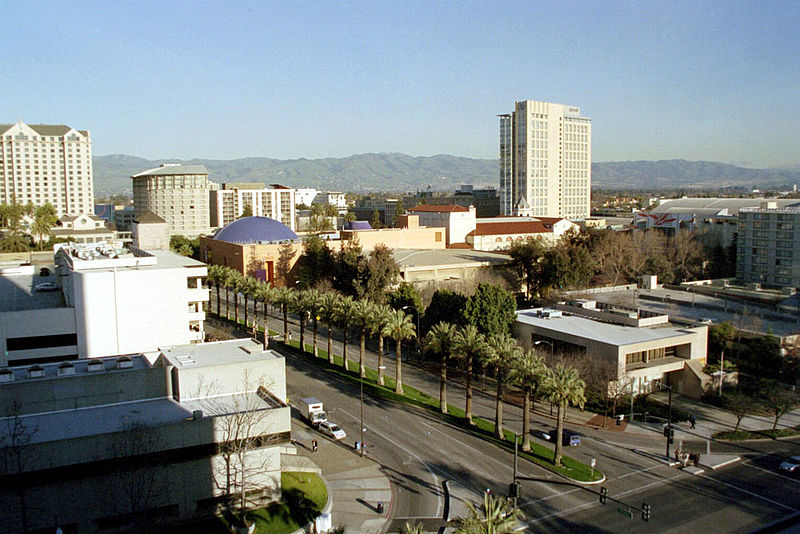10. Birmingham, Al
Birmingham is the largest city in Alabama. The city is the county seat of Jefferson County. According to the 2010 United States Census, Birmingham had a population of 212,237. The Birmingham-Hoover Metropolitan Area, in estimate by the U.S. Census Bureau in 2009, had a population of about 1,212,848; approximately one-quarter of Alabama's population.
9. Gary, Indiana
Gary is a city in Lake County, Indiana, United States. The city is in the southeastern portion of the Chicago metropolitan area and is 25 miles from downtown Chicago. The population is 80,294 at the 2010 census, making it the seventh-largest city in the state. It borders Lake Michigan and is best known for its large steel mills. Gary is adjacent to the Indiana Dunes National Lakeshore.
8. Compton, California
Compton is a city in southern Los Angeles County, California, United States, southeast of downtown Los Angeles. The city of Compton is one of the oldest cities in the county and in 1889 was the eighth city to incorporate. The city is considered part of the south side by residents of Los Angeles. As of the 2010 census, the city had a total population of 96,455. It is known as the "Hub City." Neighborhoods in Compton include: Sunny Cove, Leland, Downtown Compton, and the Richland Farms.
7. Cleveland, Ohio
Cleveland is a city in the U.S. state of Ohio and is the county seat of Cuyahoga County, the most populous county in the state. The municipality is located in northeastern Ohio on the southern shore of Lake Erie, approximately 60 miles (97 km) west of the Pennsylvania border. It was founded in 1796 near the mouth of the Cuyahoga River, and became a manufacturing center owing to its location at the head of numerous canals and railroad lines.
6. Richmond, California
Richmond is a city in western Contra Costa County, California, United States. The city was incorporated on August 7, 1905. It is located in the East Bay, part of the San Francisco Bay Area. It is a residential inner suburb of San Francisco, as well as the site of heavy industry, which has been undergoing a shift towards a service and commercial economy since the 1970s. The city has a reputation for being crime-plagued, although this problem is centralized in the urban core, with many parts of Richmond having a low crime rate. But the city's own police department has described the city as having a chronic violent crime problem for "decades.''
5. Oakland, California
Oakland is the eighth-largest city in the U.S. state of California. It is a major West Coast port, located on San Francisco Bay, about 8 miles (13 km) east of San Francisco. Oakland is a central hub city for the Bay Area subregion collectively called the East Bay, and it is the county seat of Alameda County. Based on the United States Census Bureau for 2010, Oakland's population is 390,724. Oakland has the highest concentration of artists per capita in the United States
4. Flint, Michigan
Flint is a city in the U.S. state of Michigan and is located along the Flint River, 66 miles (106 km) northwest of Detroit. As of the 2000 census, the city had a population of 124,943. The U.S. Census Bureau reports the 2010 population to be placed at 102,434, making Flint the seventh largest city in Michigan. It is the county seat of Genesee County, which lies in the Flint/Tri-Cities region of Michigan. Genesee County is also the entirety of Flint's metropolitan area, the fourth largest metropolitan area in Michigan with a population of 425,790 in 2010
3. Detroit, Michigan
Detroit is the largest city in the state of Michigan and the seat of Wayne County. Detroit is a major port city on the Detroit River, in the Midwest region of the United States. It was founded on July 24, 1701, by the Frenchman Antoine de la Mothe Cadillac. Its name originates from the French word détroit for strait, in reference to its location on the river connecting the Great Lakes.
2. Camden, New Jersey
The City of Camden is the county seat of Camden County, New Jersey, in the United States. It is located across the Delaware River from Philadelphia, Pennsylvania. As of the U.S. 2010 Census, the city had a total population of 77,344.
1. St. Louis, Missouri
St. Louis French: Saint-Louis or St-Louis, is an independent city and the second-largest city in the U.S. state of Missouri. The city had a 2010 population of 319,294 and is the principal municipality of Greater St. Louis, population 2,845,298, the largest urban area in Missouri, the 4th-largest urban area in the Midwest, and 15th-largest in the United States
Sources:
http://www.cbsnews.com/2300-504083_162-10005662-10.html?tag=page
http://en.wikipedia.org/wiki/Gary,_Indiana
http://en.wikipedia.org/wiki/Birmingham,_Alabama
http://en.wikipedia.org/wiki/Compton,_California
http://en.wikipedia.org/wiki/Cleveland,_Ohio
http://en.wikipedia.org/wiki/Richmond,_California
http://en.wikipedia.org/wiki/Oakland,_California
http://en.wikipedia.org/wiki/Flint,_Michigan
http://en.wikipedia.org/wiki/Detroit
http://en.wikipedia.org/wiki/Camden,_New_Jersey
http://en.wikipedia.org/wiki/St._Louis,_Missouri
6/21/2011
6/20/2011
Top Ten Highest Populated Cities in Texas
10. Garland
-population 1,953,631
A city in the U.S. state of Texas. It is an inner suburb northeast of Dallas and is a major part of the Dallas-Fort Worth Metroplex. It is located almost entirely within Dallas County except for small portions in Collin County.
9. Plano
-population 1,188,580
8. Corpus Christi
-population 277,554
The principal city of the three-county Corpus Christi Metropolitan Statistical Area as well as the larger Corpus Christi-Kingsville Combined Statistical Area. The translation from Latin of the city's name is Body of Christ, given to the settlement by the Spanish, in honor of the Blessed Sacrament (Eucharist). The city has been nicknamed The Sparkling City by the bay, particularly in literature promoting tourism.
7. Arlington
-population 332,969
Located approximately 12 miles (19 km) east of downtown Fort Worth and 20 miles (32 km) west of downtown Dallas, Arlington is home to the University of Texas at Arlington, the Texas Rangers' Ballpark in Arlington, Cowboys Stadium, the International Bowling Campus (which houses the United States Bowling Congress, International Bowling Museum and the International Bowling Hall of Fame), the headquarters for American Mensa, and the theme parks Six Flags Over Texas (the original Six Flags) and Hurricane Harbor.
6. Fort Worth
-population 534,694
The city was established in 1849 as an Army outpost on a bluff overlooking the Trinity River. Today Fort Worth still embraces its Western heritage and traditional architecture and design
5. El Paso
-population 563,662
El Paso stands on the Rio Grande (Río Bravo del Norte), across the border from Ciudad Juárez, Chihuahua, Mexico. The image to the right shows Downtown El Paso and Juárez, with the Juárez Mountains in the background. The two cities form a combined international metropolitan area, sometimes called Juarez-El Paso, with Juárez being the significantly larger of the two in population. Together they have a combined population of 2 million, with Juárez accounting for 2/3 of the population.
4. Austin
-population 656,562
The area was settled in the 1830s on the banks of the Colorado River by pioneers who named the village Waterloo. In 1839, Waterloo was chosen to become the capital of the newly independent Republic of Texas. The city was renamed after Stephen F. Austin, known as the father of Texas. The city grew throughout the 19th century and became a center for government and education with the construction of the Texas State Capitol and the University of Texas.
3. San Antonio
-population 1,444,646
The city was named for San Antonio de Padua, whose feast day is on June 13, when a Spanish expedition stopped in the area in 1691. Famous for Spanish missions, the Alamo, the River Walk, the Tower of the Americas, the Alamo Bowl, and host to SeaWorld and Six Flags Fiesta Texas theme parks, the city is visited by approximately 26 million tourists per year according to the San Antonio Convention and Visitors Bureau.
2. Dallas
-population 1,188,580
Dallas was founded in 1841 and formally incorporated as a city in February 1856. The city's economy is primarily based on banking, commerce, telecommunications, computer technology, energy, and transportation, home to several Fortune 500 companies. Located in North Texas and a major city in the American South, Dallas is the core of the largest inland metropolitan area in the United States that lacks any navigable link to the sea. The city's prominence arose from its historical importance as a center for the oil and cotton industries, and its position along numerous railroad lines.
1. Houston
-population 1,953,631
Houston was founded on August 30, 1836 by brothers Augustus Chapman Allen and John Kirby Allen on land near the banks of Buffalo Bayou. The city was incorporated on June 5, 1837, and named after then-President of the Republic of Texas—former General Sam Houston—who had commanded at the Battle of San Jacinto, which took place 25 miles (40 km) east of where the city was established. The burgeoning port and railroad industry, combined with oil discovery in 1901, has induced continual surges in the city's population.
SOURCES:
http://www.tsl.state.tx.us/ref/abouttx/popcity32000.html8
http://en.wikipedia.org/wiki/Garland,_Texas
http://en.wikipedia.org/wiki/Plano,_Texas
http://en.wikipedia.org/wiki/Corpus_Christi,_Texas
http://en.wikipedia.org/wiki/Arlington,_Texas
http://en.wikipedia.org/wiki/Fort_Worth,_Texas
http://en.wikipedia.org/wiki/El_Paso,_Texas
http://en.wikipedia.org/wiki/Austin_texas
http://en.wikipedia.org/wiki/Dallas_texas
http://en.wikipedia.org/wiki/Houston_texas
Daily Top Ten Blog
Check Out Our List Daily!
http://thedailytoptenblog.blogspot.com/
-population 1,953,631
A city in the U.S. state of Texas. It is an inner suburb northeast of Dallas and is a major part of the Dallas-Fort Worth Metroplex. It is located almost entirely within Dallas County except for small portions in Collin County.
9. Plano
-population 1,188,580
In 2005, Plano was designated the best place to live in the Western United States by CNN Money magazine. In 2006, Plano was selected as the 11th best place to live in the United States by CNN Money magazine. Plano schools consistently score among the highest in the nation. It has been rated as the wealthiest city in the United States by CNN Money with a poverty rate of less than 6.4%.8. Corpus Christi
-population 277,554
The principal city of the three-county Corpus Christi Metropolitan Statistical Area as well as the larger Corpus Christi-Kingsville Combined Statistical Area. The translation from Latin of the city's name is Body of Christ, given to the settlement by the Spanish, in honor of the Blessed Sacrament (Eucharist). The city has been nicknamed The Sparkling City by the bay, particularly in literature promoting tourism.
7. Arlington
-population 332,969
Located approximately 12 miles (19 km) east of downtown Fort Worth and 20 miles (32 km) west of downtown Dallas, Arlington is home to the University of Texas at Arlington, the Texas Rangers' Ballpark in Arlington, Cowboys Stadium, the International Bowling Campus (which houses the United States Bowling Congress, International Bowling Museum and the International Bowling Hall of Fame), the headquarters for American Mensa, and the theme parks Six Flags Over Texas (the original Six Flags) and Hurricane Harbor.
6. Fort Worth
-population 534,694
The city was established in 1849 as an Army outpost on a bluff overlooking the Trinity River. Today Fort Worth still embraces its Western heritage and traditional architecture and design
5. El Paso
-population 563,662
El Paso stands on the Rio Grande (Río Bravo del Norte), across the border from Ciudad Juárez, Chihuahua, Mexico. The image to the right shows Downtown El Paso and Juárez, with the Juárez Mountains in the background. The two cities form a combined international metropolitan area, sometimes called Juarez-El Paso, with Juárez being the significantly larger of the two in population. Together they have a combined population of 2 million, with Juárez accounting for 2/3 of the population.
4. Austin
-population 656,562
The area was settled in the 1830s on the banks of the Colorado River by pioneers who named the village Waterloo. In 1839, Waterloo was chosen to become the capital of the newly independent Republic of Texas. The city was renamed after Stephen F. Austin, known as the father of Texas. The city grew throughout the 19th century and became a center for government and education with the construction of the Texas State Capitol and the University of Texas.
3. San Antonio
-population 1,444,646
The city was named for San Antonio de Padua, whose feast day is on June 13, when a Spanish expedition stopped in the area in 1691. Famous for Spanish missions, the Alamo, the River Walk, the Tower of the Americas, the Alamo Bowl, and host to SeaWorld and Six Flags Fiesta Texas theme parks, the city is visited by approximately 26 million tourists per year according to the San Antonio Convention and Visitors Bureau.
2. Dallas
-population 1,188,580
Dallas was founded in 1841 and formally incorporated as a city in February 1856. The city's economy is primarily based on banking, commerce, telecommunications, computer technology, energy, and transportation, home to several Fortune 500 companies. Located in North Texas and a major city in the American South, Dallas is the core of the largest inland metropolitan area in the United States that lacks any navigable link to the sea. The city's prominence arose from its historical importance as a center for the oil and cotton industries, and its position along numerous railroad lines.
1. Houston
-population 1,953,631
Houston was founded on August 30, 1836 by brothers Augustus Chapman Allen and John Kirby Allen on land near the banks of Buffalo Bayou. The city was incorporated on June 5, 1837, and named after then-President of the Republic of Texas—former General Sam Houston—who had commanded at the Battle of San Jacinto, which took place 25 miles (40 km) east of where the city was established. The burgeoning port and railroad industry, combined with oil discovery in 1901, has induced continual surges in the city's population.
SOURCES:
http://www.tsl.state.tx.us/ref/abouttx/popcity32000.html8
http://en.wikipedia.org/wiki/Garland,_Texas
http://en.wikipedia.org/wiki/Plano,_Texas
http://en.wikipedia.org/wiki/Corpus_Christi,_Texas
http://en.wikipedia.org/wiki/Arlington,_Texas
http://en.wikipedia.org/wiki/Fort_Worth,_Texas
http://en.wikipedia.org/wiki/El_Paso,_Texas
http://en.wikipedia.org/wiki/Austin_texas
http://en.wikipedia.org/wiki/Dallas_texas
http://en.wikipedia.org/wiki/Houston_texas
Daily Top Ten Blog
Check Out Our List Daily!
http://thedailytoptenblog.blogspot.com/
6/19/2011
Top Ten Highest Population Cities in California
10. Anaheim
-population 353,643
A city in Orange County, California. The city anticipates that the population will surpass 400,000 by 2014 because of rapid development in its Platinum Triangle area as well as in Anaheim Hills. The Platinum Triangle is the fastest growing area in Orange County.
9. Santa Ana
-population 357,754
Founded in 1869, Santa Ana is located in Southern California adjacent to the Santa Ana River, 10 miles (16 km) away from the California coast. The city is part of the Los Angeles–Long Beach–Santa Ana metropolitan area which, according to the U.S. Census Bureau, is the second largest metropolitan area in the U.S., with almost thirteen million people.
8. Oakland
-population 430,666
Initially, Oakland grew from having its hillside oak and redwood timber resources logged to build San Francisco, and Oakland's fertile flatland soils helped it become a prolific agricultural region. In the late 1860s, Oakland was selected as the western terminus of the Transcontinental Railroad.
7. Sacramento
-population 486, 189
Sacramento became a city through the efforts of John Sutter, Sr., a Swiss immigrant, his son, John Sutter, Jr. and James W. Marshall. Sacramento grew quickly thanks to the protection of Sutter's Fort, which was established by Sutter in 1839. During the California Gold Rush, Sacramento was a major distribution point, a commercial and agricultural center, and a terminus for wagon trains, stagecoaches, riverboats, the telegraph, the Pony Express, and the First Transcontinental Railroad.
6. Long Beach
-population 494,709
The city is a dominant maritime center of the United States and was recently named "Aquatic Capital of the Nation." It wields substantial influence critical to the global economy. The Port of Long Beach is the United States' second busiest container port and one of the world's largest shipping ports.The city also maintains a large oil industry with the substance being found both underground and offshore. Manufacturing sectors include those in aircraft, car parts, electronic and audiovisual equipment, and home furnishings.
5. Fresno
-population 502,303
Fresno is located in the center of the wide San Joaquin Valley of Central California, approximately 200 miles (322 km) north of Los Angeles and 170 miles (274 km) south of the state capital, Sacramento. The city is part of Metropolitan Fresno, which, with a population of 1,107,416 is the second largest metro area (after the Sacramento Metropolitan Area) in the Central Valley. The name Fresno is the Spanish language word for the ash tree, and an ash leaf is featured on the city's flag.
4. San Francisco
-population 856,095
The only consolidated city-county in California, it encompasses a land area of 46.7 square miles (121 km2) on the northern end of the San Francisco Peninsula, giving it a density of 17,243 people per square mile (6,655/km2). It is the most densely settled large city (population greater than 200,000) in the state of California and the second-most densely populated large city in the United States.
3. San Jose
-population 1,023,083
San Jose was founded on November 29, 1777, as El Pueblo de San José de Guadalupe, the first town in the Spanish colony of Nueva California, which later became Alta California.The city served as a farming community to support Spanish military installations at San Francisco and Monterey. When California gained statehood in 1850, San Jose served as its first capital.
2. San Diego
-population 1,376,173
Historically home to the Kumeyaay people, San Diego was the first site visited by Europeans on what is now the West Coast of the United States. Upon landing in San Diego Bay in 1542, Juan Cabrillo claimed the entire area for Spain, forming the basis for the settlement of Alta California 200 years later. The Presidio and Mission of San Diego, founded in 1769, were the first European settlement in what is now California. In 1821, San Diego became part of newly independent Mexico, and in 1850, became part of the United States with the admission of California to the union
1. Los Angeles
-population 4,094,764
Often known by its initials, LA, and nicknamed the City of Angels, Los Angeles is a world center of business, international trade, entertainment, culture, media, fashion, science, technology, and education. It is home to renowned institutions covering a broad range of professional and cultural fields, and is one of the most substantial economic engines within the United States. Los Angeles has been ranked the third richest city and fifth most powerful and influential city in the world, behind only New York City in the United States.
SOURCES:
http://www.seecalifornia.com/california/population-top10-cities.html
http://en.wikipedia.org/wiki/Anaheim,_California
http://en.wikipedia.org/wiki/Santa_Ana,_California
http://en.wikipedia.org/wiki/Oakland_California
http://en.wikipedia.org/wiki/Sacramento_California
http://en.wikipedia.org/wiki/Long_Beach,_California
http://en.wikipedia.org/wiki/Fresno_California
http://en.wikipedia.org/wiki/San_francisco
http://en.wikipedia.org/wiki/San_Jose,_California
http://en.wikipedia.org/wiki/San_Diego_California
http://en.wikipedia.org/wiki/Los_Angeles_California
Copy & Paste:
-population 353,643
A city in Orange County, California. The city anticipates that the population will surpass 400,000 by 2014 because of rapid development in its Platinum Triangle area as well as in Anaheim Hills. The Platinum Triangle is the fastest growing area in Orange County.
9. Santa Ana
-population 357,754
Founded in 1869, Santa Ana is located in Southern California adjacent to the Santa Ana River, 10 miles (16 km) away from the California coast. The city is part of the Los Angeles–Long Beach–Santa Ana metropolitan area which, according to the U.S. Census Bureau, is the second largest metropolitan area in the U.S., with almost thirteen million people.
8. Oakland
-population 430,666
Initially, Oakland grew from having its hillside oak and redwood timber resources logged to build San Francisco, and Oakland's fertile flatland soils helped it become a prolific agricultural region. In the late 1860s, Oakland was selected as the western terminus of the Transcontinental Railroad.
7. Sacramento
-population 486, 189
Sacramento became a city through the efforts of John Sutter, Sr., a Swiss immigrant, his son, John Sutter, Jr. and James W. Marshall. Sacramento grew quickly thanks to the protection of Sutter's Fort, which was established by Sutter in 1839. During the California Gold Rush, Sacramento was a major distribution point, a commercial and agricultural center, and a terminus for wagon trains, stagecoaches, riverboats, the telegraph, the Pony Express, and the First Transcontinental Railroad.
6. Long Beach
-population 494,709
The city is a dominant maritime center of the United States and was recently named "Aquatic Capital of the Nation." It wields substantial influence critical to the global economy. The Port of Long Beach is the United States' second busiest container port and one of the world's largest shipping ports.The city also maintains a large oil industry with the substance being found both underground and offshore. Manufacturing sectors include those in aircraft, car parts, electronic and audiovisual equipment, and home furnishings.
5. Fresno
-population 502,303
Fresno is located in the center of the wide San Joaquin Valley of Central California, approximately 200 miles (322 km) north of Los Angeles and 170 miles (274 km) south of the state capital, Sacramento. The city is part of Metropolitan Fresno, which, with a population of 1,107,416 is the second largest metro area (after the Sacramento Metropolitan Area) in the Central Valley. The name Fresno is the Spanish language word for the ash tree, and an ash leaf is featured on the city's flag.
4. San Francisco
-population 856,095
The only consolidated city-county in California, it encompasses a land area of 46.7 square miles (121 km2) on the northern end of the San Francisco Peninsula, giving it a density of 17,243 people per square mile (6,655/km2). It is the most densely settled large city (population greater than 200,000) in the state of California and the second-most densely populated large city in the United States.
3. San Jose
-population 1,023,083
San Jose was founded on November 29, 1777, as El Pueblo de San José de Guadalupe, the first town in the Spanish colony of Nueva California, which later became Alta California.The city served as a farming community to support Spanish military installations at San Francisco and Monterey. When California gained statehood in 1850, San Jose served as its first capital.
2. San Diego
-population 1,376,173
Historically home to the Kumeyaay people, San Diego was the first site visited by Europeans on what is now the West Coast of the United States. Upon landing in San Diego Bay in 1542, Juan Cabrillo claimed the entire area for Spain, forming the basis for the settlement of Alta California 200 years later. The Presidio and Mission of San Diego, founded in 1769, were the first European settlement in what is now California. In 1821, San Diego became part of newly independent Mexico, and in 1850, became part of the United States with the admission of California to the union
1. Los Angeles
-population 4,094,764
Often known by its initials, LA, and nicknamed the City of Angels, Los Angeles is a world center of business, international trade, entertainment, culture, media, fashion, science, technology, and education. It is home to renowned institutions covering a broad range of professional and cultural fields, and is one of the most substantial economic engines within the United States. Los Angeles has been ranked the third richest city and fifth most powerful and influential city in the world, behind only New York City in the United States.
SOURCES:
http://www.seecalifornia.com/california/population-top10-cities.html
http://en.wikipedia.org/wiki/Anaheim,_California
http://en.wikipedia.org/wiki/Santa_Ana,_California
http://en.wikipedia.org/wiki/Oakland_California
http://en.wikipedia.org/wiki/Sacramento_California
http://en.wikipedia.org/wiki/Long_Beach,_California
http://en.wikipedia.org/wiki/Fresno_California
http://en.wikipedia.org/wiki/San_francisco
http://en.wikipedia.org/wiki/San_Jose,_California
http://en.wikipedia.org/wiki/San_Diego_California
http://en.wikipedia.org/wiki/Los_Angeles_California
Copy & Paste:
Subscribe to:
Comments (Atom)




























